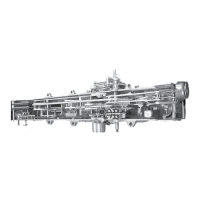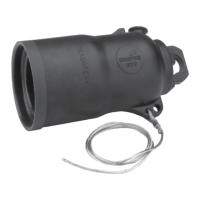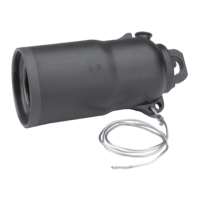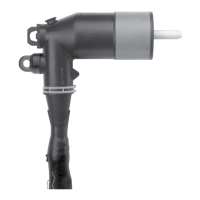Alarms
An alarm is a binary (On/Off) flag that is activated when a
user-defined condition is true. The status of an alarm can
be viewed on the LCD display or through communications,
including ProView NXG software. Alarms can only
be configured via communications. See document
MN225015EN CL-7 Regulator Control ProView NXG
Software Programming Guide for information on configuring
alarms.
The user can define the priority of an alarm to cause the
Alarm LED, Warning LED, or no LED to be illuminated. The
assigned priority of the alarm also determines the order in
which the alarms are viewed via the display.
Assigning a Priority of 0–50 will cause the Alarm LED
to be illuminated when the alarm condition is active.
Assigning a Priority of 51–100 will cause the Warning LED
to be illuminated when the alarm condition is active.
Assigning a Priority of 101–127 will not cause an LED to
be illuminated, but the condition can be viewed on the
LCD display or through communications while the alarm
condition is active.
A timer can also be set for each alarm. This will allow the
alarm to become active only after the alarm condition has
existed and the period of time specified by the timer (in
seconds) has expired. When an alarm becomes active,
it is given the state of Unacknowledged. If the alarm is
configured to illuminate an LED, the LED will flash as
long as the alarm is Unacknowledged. To acknowledge
an alarm the Operate security level is required. After
entering the security code, enter Alarms > Alarms
Active Unacknowledged using the front-panel menu; the
unacknowledged alarms will display. Press the ENTER key
to display (ACKNOWLEDGE) and ENTER again to complete
the operation. If the alarm is configured to illuminate an
LED and it has been acknowledged, the LED will be on
continuously. The alarm will turn off whenever the alarm
condition is no longer true.
The control can also record an event or take a profile
snapshot whenever an alarm becomes active or inactive.
The control contains two types of user-configurable alarms:
Status Alarms and Data Alarms.
The Status Alarm type is activated based upon the
condition of a binary (On/Off) parameter. By default, Status
Alarms become active when the parameter is On. The
alarm, however, can be inverted so that it becomes active
when the parameter is Off. See document MN225015EN
CL-7 Regulator Control ProView NXG Software Programming
Guide for a complete list and definitions of available Status
alarms.
EXAMPLE:
Configuring a Supervisory Active Alarm to be inverted with
a Priority of 25 will cause the Alarm LED to flash whenever
the Supervisory Switch is in the Off position.
The Data Alarm type is activated based upon the
condition of an analog (numeric) parameter being above
or below a threshold value. The operations counters
and metering values are available as Data Alarms. See
document MN225015EN CL-7 Regulator Control ProView
NXG Software Programming Guide for a complete list and
definitions of available Status alarms.
EXAMPLE: Configuring a Compensated Voltage Low Alarm
with a Threshold of 115 V with a Priority of 75 will cause the
Warning LED to flash whenever the compensated voltage is
below 115 V.
Sequence of events (SOE)
An event is a time-stamped record of an alarm condition
or control activity. The CL-7 control is designed to record
a sequence of these events; event data is stored in non-
volatile memory on the control. The last fifty events can be
viewed via the front panel display using the top level nested
menu item SEQUENCE OF EVENTS. The last 300+ events
can be viewed using ProView NXG software.
Configuring SOE can only be done using software. There
are a number of events that are pre-configured on every
control. See document MN225015EN CL-7 Regulator
Control ProView NXG Software Programming Guide for a
list of available events and information on configuring SOE
functionality.
Data profiler
The Data Profiler records the current state of parameters
chosen by the user at regular intervals into non-volatile
memory. The Data Profiler data can only be viewed using
ProView NXG software. Configuring the Data Profiler
must also be accomplished using the software. The user
can choose to profile as many of the instantaneous and
demand (present) parameters as desired. The sampling
interval can be set from one (1) minute to one (1) day.
The storage capacity for data is limited; the greater the
number of parameters chosen and the shorter the sampling
interval, the less overall time will pass before the record
begins to be overwritten. In the software, a Trend Time will
be displayed as the Profiler is configured which will be an
estimate of the length of time data can be recorded before
the oldest data is overwritten.
See document MN225015EN CL-7 Regulator Control
ProView NXG Software Programming Guide for a list and
description of available Data Profiler items and information
on configuring Data Profiler functionality.
152
INSTALLATION, OPERATION, AND MAINTENANCE INSTRUCTIONS MN225003EN April 2018
CL-7 Voltage Regulator Control

